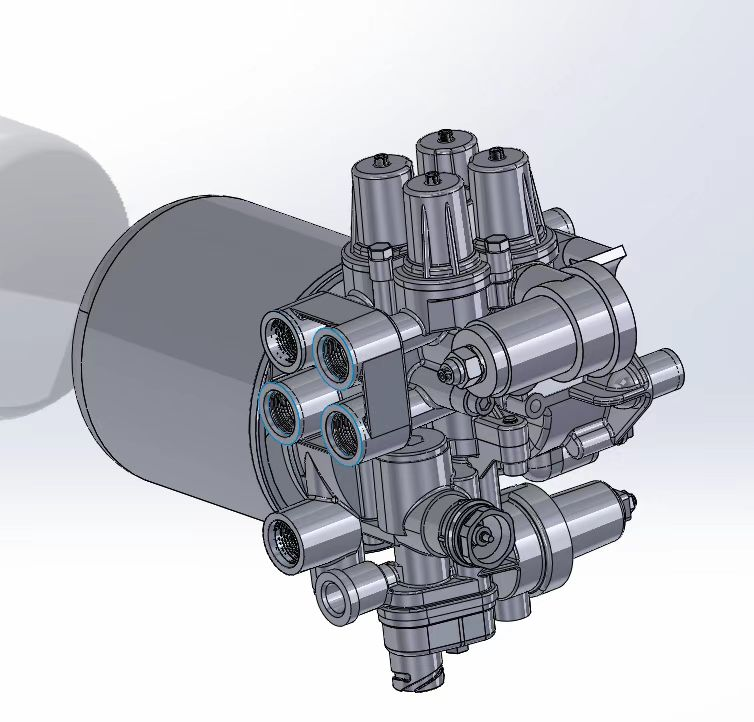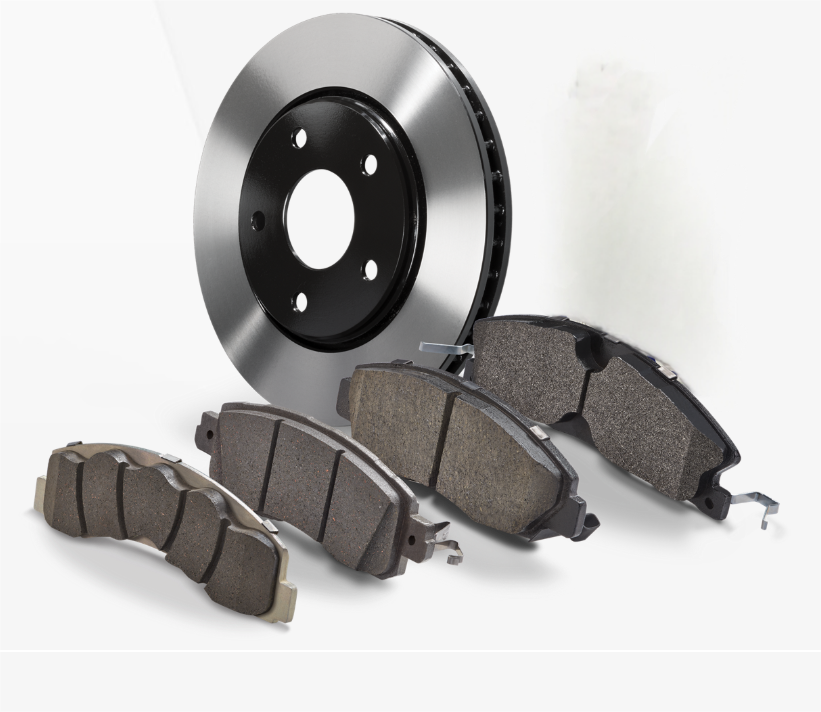Material Composition and Durability of Quality Brake Discs
Traditional vs. Advanced Brake Disc Materials
Most standard brake discs come from cast iron because people appreciate how tough it is and how good it handles heat. That's why we see cast iron all over regular cars on the road today. But there's a downside too heavy iron just adds unnecessary weight to the car, which isn't great for fuel economy or performance. Things have changed quite a bit lately though. More manufacturers are turning to newer stuff like carbon ceramic composites. What makes these materials stand out? Well, they're much lighter than traditional options and handle heat way better, something that matters a lot when pushing a vehicle to its limits. Take carbon ceramic discs specifically they work really well in sports cars and other high performance machines since they don't lose effectiveness even when things get super hot during intense driving sessions.
Research into different types of brake disc materials reveals some pretty big differences when it comes to how long they last and how durable they are overall. Take carbon ceramic discs for example these tend to stick around much longer compared to regular cast iron ones even though they come with a bigger price tag upfront. The fact that they outlast traditional options combined with better stopping power usually means spending extra money now pays off in the long run across the entire lifespan of the vehicle. Traditional discs definitely work fine for many situations but there's no denying that high end materials offer serious advantages particularly in performance oriented vehicles or racing applications where every fraction of a second matters.
How Material Quality Affects Braking Performance and Safety
What kind of materials go into making brake discs really matters when it comes to how well they stop a vehicle and overall road safety. When manufacturers use good quality stuff, cars can come to a halt faster, cut down on stopping distance, and react quicker to sudden situations something every driver wants for themselves and their passengers. On the flip side, cheap materials often spell trouble. We've seen plenty of instances where budget brake discs just don't hold up. They crack under pressure or warp when exposed to high temperatures from repeated stops, especially during long drives downhill. Mechanics report seeing these issues all too frequently, and automotive safety organizations regularly highlight such problems in their annual reports.
When it comes to brake discs, going with certified quality products really matters for both safety and how well the brakes work. Both everyday drivers and fleet managers should stick to getting replacement parts from suppliers who actually care about quality control and meet proper certification requirements. Good suppliers typically have solid reputations built on years of experience rather than just marketing claims. Quality brake discs do more than just perform better they literally keep people safe on the roads. Spending a bit extra upfront on proper brake components pays off in the long run by preventing accidents and avoiding costly repairs down the line.
Heat Dissipation Mechanisms in High-Quality Brake Discs
The Science of Heat Management in Braking Systems
The amount of heat produced during braking plays a big role in how well brakes work and how long they last. When cars come to a stop, all that movement gets converted into heat mainly where the brake pads rub against the discs. What happens next? Well, too much heat starts messing with braking effectiveness. We call this phenomenon brake fade, basically when the brakes start failing because they get too hot. For this reason, managing heat properly matters a lot when picking out materials for brake discs. Materials that conduct heat well, like cast iron or those fancy carbon composite blends, help prevent brake fade from happening. Some real world testing shows these newer materials actually handle heat better than traditional options, which means improved stopping power even under tough driving situations.
Ventilation and Design Features for Effective Cooling
How well brake discs stay cool depends heavily on their ventilation and overall design. Most modern brakes have either drilled holes or slots cut into them because these openings let air move better across the hot metal surfaces, which helps get rid of excess heat faster. Something else worth noting is that these special designs actually help release gases trapped between the pad and disc when braking hard, so the system keeps working properly even under heavy use. We've seen some interesting developments lately too, like those fancy vane systems inside the discs themselves that act kind of like fans to push more air through. Looking at actual tests done on race cars and sports models shows just how much difference these improvements can make. The temperature stays lower for longer periods, and drivers report noticeably better response from their brakes after installing these upgraded components. For anyone serious about safety and reliability, investing in smarter disc designs really pays off in the long run.
The Role of Friction in Braking Efficiency and Safety
Understanding Friction Coefficients in Brake Discs
The friction coefficient really matters when it comes to how well brake discs work because it determines how fast a car can slow down. Basically, what these numbers tell us is how much resistance happens between the brake pads and the actual disc surface. Higher numbers mean better stopping power, whereas lower ones often result in needing more space to come to a complete stop. The National Highway Traffic Safety Administration has actually done studies showing there's a clear connection between getting those friction numbers right and making cars safer overall. When automotive engineers look at these figures, they get important information for picking out materials that not only stop vehicles efficiently but also keep drivers safe on the road.
How High-Friction Materials Improve Stopping Power
The use of high friction materials in brake discs really makes a difference when it comes to stopping power no matter what kind of driving conditions we're talking about. Materials like carbon ceramic composites give vehicles much shorter stopping distances because they create better friction than regular old cast iron. But there's always something to consider here too. These high friction options tend to wear down faster and require much better heat management systems. Still plenty of engineers and mechanics swear by them despite these issues. They point out that performance tests consistently show these materials work better than traditional ones in most situations. When choosing between different materials, manufacturers have to find that sweet spot between wanting maximum stopping power and making sure the brakes last long enough without overheating problems down the road.
Design Innovations for Enhanced Brake Disc Performance
Slotted, Drilled, and Coated Discs: Balancing Performance and Longevity
Slotted and drilled brake discs really help get rid of heat and stop moisture from building up over time. The design includes channels or actual holes cut into the surface of the disc itself. These openings let out hot air and water vapor that would otherwise stick around between the brake pad and disc surface. When we talk about slotted discs specifically, they work great at pushing away all that accumulated heat and gas during heavy braking situations. This actually improves how well the brakes grip and makes them more efficient overall. Coated brake discs bring another benefit too. Special protective coatings prevent rust and general wear and tear. These coatings act as barriers against road salt, dirt, and other elements that normally eat away at metal surfaces. As a result, coated discs tend to last much longer than regular ones. Most automotive manufacturers have tested these different disc types extensively. Their data shows measurable improvements in stopping distance and reduced replacement frequency when using either slotted/drilled or coated versions compared to standard discs.
Structural Integrity and Weight Distribution in Modern Designs
The structural integrity of brake discs matters a lot when they need to handle all that stress from regular braking. Today's brake discs are built to keep their shape even when things get really hot or stressful, so they don't warp or fail unexpectedly. Safety on the road depends on this kind of reliability. Weight balance also plays a big role here. Brake discs that distribute weight properly make cars handle better and drive smoother since they cut down on those annoying vibrations while driving. From what engineers have learned over time, discs that strike a good balance between weight distribution and structural strength tend to work best, giving drivers stronger stops and lasting longer too. New materials like carbon ceramic composites along with clever manufacturing methods are behind many of these advances, which means today's brake discs just plain work better than ever before.
Maintenance Practices to Ensure Brake Disc Safety
Identifying Wear: Signs Your Brake Discs Need Replacement
Knowing when brake discs are starting to wear down matters a lot for staying safe on the road. Most drivers notice things like shaking when they hit the brakes, strange sounds coming from under the hood, or actually seeing damage on the surface like scratches or weird colors. Checking these components regularly helps catch problems before they become big headaches. According to industry reports, around 70% of all brake system failures happen because people simply didn't check their brakes often enough. A quick look at those rotors every few months can spot issues early on so mechanics can replace worn out parts before something serious happens. Think about it this way nobody wants to be stuck on the side of the highway because their brakes gave out unexpectedly.
Best Practices for Extending Brake Disc Lifespan
Taking good care of brake discs through proper maintenance really pays off in terms of both longevity and how well they work. Regular stuff like keeping them clean, making sure there's enough brake fluid, and not riding the brakes when coming to stops makes all the difference over time. Most car folks would do well to keep track of these basic steps so their discs stay in shape. Mechanics always stress the importance of giving those discs a good wipe down and looking for any buildup that might wear them down faster than normal. When drivers actually put in the effort to maintain their braking system properly, they'll find themselves replacing discs far less often than those who neglect routine checks. The payoff comes in both wallet savings and peace of mind knowing the brakes will respond when needed most.







